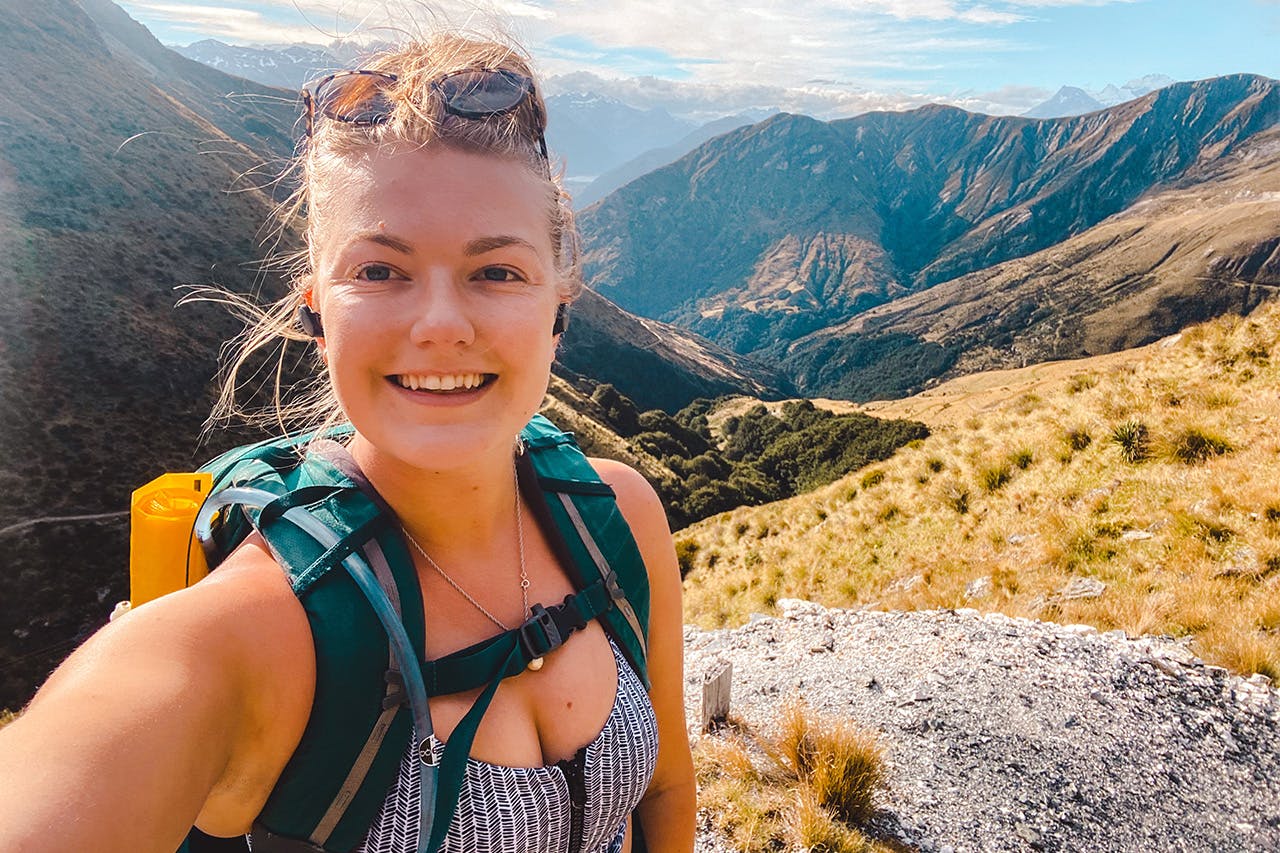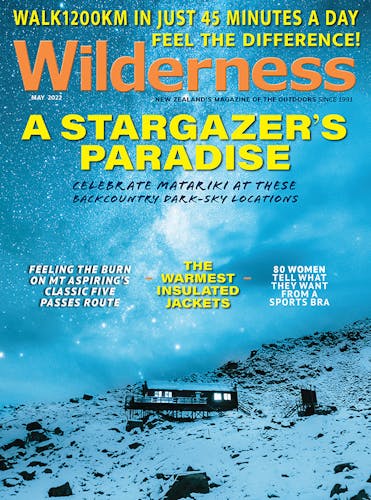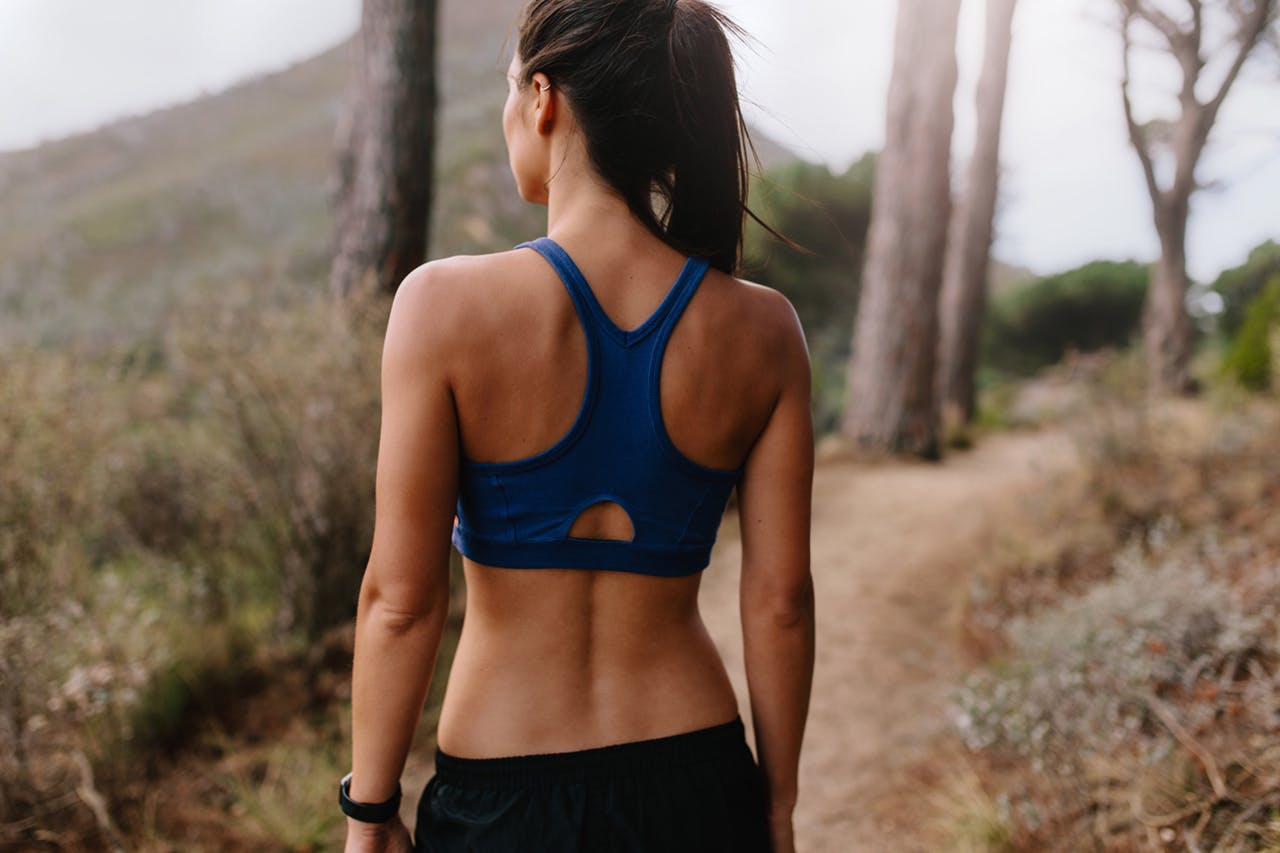What do women want in a sports bra? Wilderness asked more than 80 tramping women and collated their feedback.
Sports bras are an important piece of clothing that can greatly affect a woman’s enjoyment of a tramping trip. Half the population spends time thinking about, researching and then trying out various brands and styles of bra to see what works. Then while out adventuring, a bra is another piece of kit to carry and to wash. I surveyed more than 80 women trampers, asking them what they look for in a sports bra and what works. The upshot is: it’s a mostly unseen piece of clothing that can pack a punch in terms of importance. Luckily, there is also a decent range of bras available so with a bit of trial and error there should be something to suit everyone’s needs.
To bra or not to bra
Going without a bra is an easy option for those with smaller chests. The freedom and the ease are hard to beat.
Survey respondent Abi says there are positive side effects to going braless: “I’ve found going braless is best. I used to wear merino bras for work and tramping. I never found one that didn’t give me awful back, shoulder and neck pain. It was so frustrating that I didn’t wear a bra one day, and it was great to not hurt at the end of the day….so I kept at it.
“Now my pecs are a bit stronger from lugging around the ‘ladies’ without support, so it is comfier and I am stronger, too. The only issue I have is nipple chafing when it is cold.”
If you can’t go braless, consider the reasons to wear a bra – it’s often one of the following:
Chafing: Stopping nipple chafe can be a factor under a loose top or tee. A tight-fitting bra can prevent this by providing a layer of fabric for your top to rub against, not your sensitive skin.
Warmth: A bra is an extra layer of clothing to keep wearer’s warm.
The lift: To help keep cool and lessen sweat pooling, particularly under larger breasts.
Multi-use: Wearing a bra that can double as a bikini top or a crop top around a hut or that you can wash or swim in is practical, convenient and cuts down on pack weight.
Top priorities in a tramping bra
Comfort and quick-drying are top considerations for bra-wearing trampers. Comfort can be jeopardised by bra straps rubbing under pack straps or a too tight or poorly fitting bra. Many trampers will prioritise comfort over quick-drying and choose a material like merino wool.
Bras can have other uses, as Lesley said: “I thread my PLB onto my bra and it’s placed between my breasts when tramping. My bra has to be strong enough to hold it.”
While good support is a focus for Lesley, it was down the list of priorities for most other women.

Kalena Stosser’s bra has straps that clip together at the back to prevent them from slipping off shoulders and a front zip for easy removal.
Fabric
There are plenty of bras made with quick-drying fabrics, but for tramping the overwhelming preference seems to be merino wool.
Tramping in a woollen bra may not sound appealing. But, although merino takes longer to dry than most synthetic fabrics, the benefits can outweigh the discomfort of putting on a slightly damp bra each morning: a lack of smell, the ability of merino to better regulate temperature, and the comfort are big advantages.
Merino is totally natural and can be composted at the end of its life – although many companies add synthetic fibres to add stretch or minimise bagginess.
Survey respondent Alice said fine merino, commonly used in lightweight outdoor clothing, offers very little support to those with larger busts. “I use a merino bra with no issue – mainly for the smell and comfort factor – but it would offer zero support for bigger chests.
“I also find that, like most merino, it holds more moisture and dries slower than synthetic sports bras.”
Some women have learned to live with this, embracing it even, and accept the buoyancy offered by a thin merino crop top. Others stick to synthetic fabrics with more built-in support. Bamboo is gaining popularity, offering similar benefits to merino: soft, comfy, quick-drying, temperature regulating, moisture-wicking and odour resistant.
Style
Racerback or crop top? There are pros and cons for both. Racerback bras have no fabric under pack straps, so there’s one less thing to cause friction, rubbing or leaving marks. This also applies to a crossback style and both offer more freedom of movement. However, there’s potentially less support with these two styles, especially for those with a larger bust.
Rachel sums it up: “Racerbacks and merino [are] not made for bigger boobs.”
Racerback bras can be visible under some singlet tops if that is a concern.
A crop top style can offer more support, depending on the brand, and is often easier to get into and out of while wearing clothes, which could be a consideration when privacy is needed.
Sizing
It seems to be the larger the bust the fewer the options. Complaints from larger-chested women are common: do clothing companies assume that all parts of an active woman’s body are small? A regular bra may be the only option, or, as some women recommend, wear a crop top and get used to less support. Sizing seems to vary between different brands, so trying on a bra is essential. Testing out a new bra on a multi-day trip with a full pack and lots of sweat is the best way to discover if it’s right for you. Kate is not alone in her search for supportive activewear: “I’m a size 16, tall, with big boobs. I want to do more tramping but finding gear can be hard.”
Nipples
Bras and nipples go together but I’ve never heard men worrying about whether theirs are showing through their merino top. For some women, one of the purposes of a bra is to cover and hide nipples, especially in a hut or even when meeting other walkers. While there are social norms to be navigated around this, I say all power to anyone not giving a toss and going bra-free.
Anna shared her thoughts: “I’m 16DD and nervously brought an XL merino bra. I found it excellent once I got used to the lack of usual scaffolding. However, I did notice my nipples showing in photos when I got a bit cold.”
I am sure this is not new, but I felt like I invented the use of tape to flatten my nipples while tramping: I could go without a bra and not feel self-conscious around others. While causing great hilarity with my friends, the freedom was worth it.
Brands
A pick of the crop, although by no means definitive, based on feedback from more than 80 New Zealand women.
Berlei: A wide range of sports bras catering for different needs and sizes.
Icebreaker: Offering merino clothing and underwear. Their racerback bras are particularly popular.
Lululemon: A wide range of sports bras, with graded support. They’re popular with women with larger breasts.
Mons Royale: Popular with trampers, this New Zealand brand offers a range of underwear and clothing.
Nisa: A Wellington brand employing women from the refugee community. Merino and organic cotton are used for a range of underwear.
Shock Absorber: These bras provide excellent support and are a good option for women with large breasts.
Skins: Tight-fitting and secure crop tops designed for activity. Need to buy the correct size as they are not adjustable.
Lorna Jane: A wide range of sports bras of various styles including those with front zips. Many are designed for compression.








